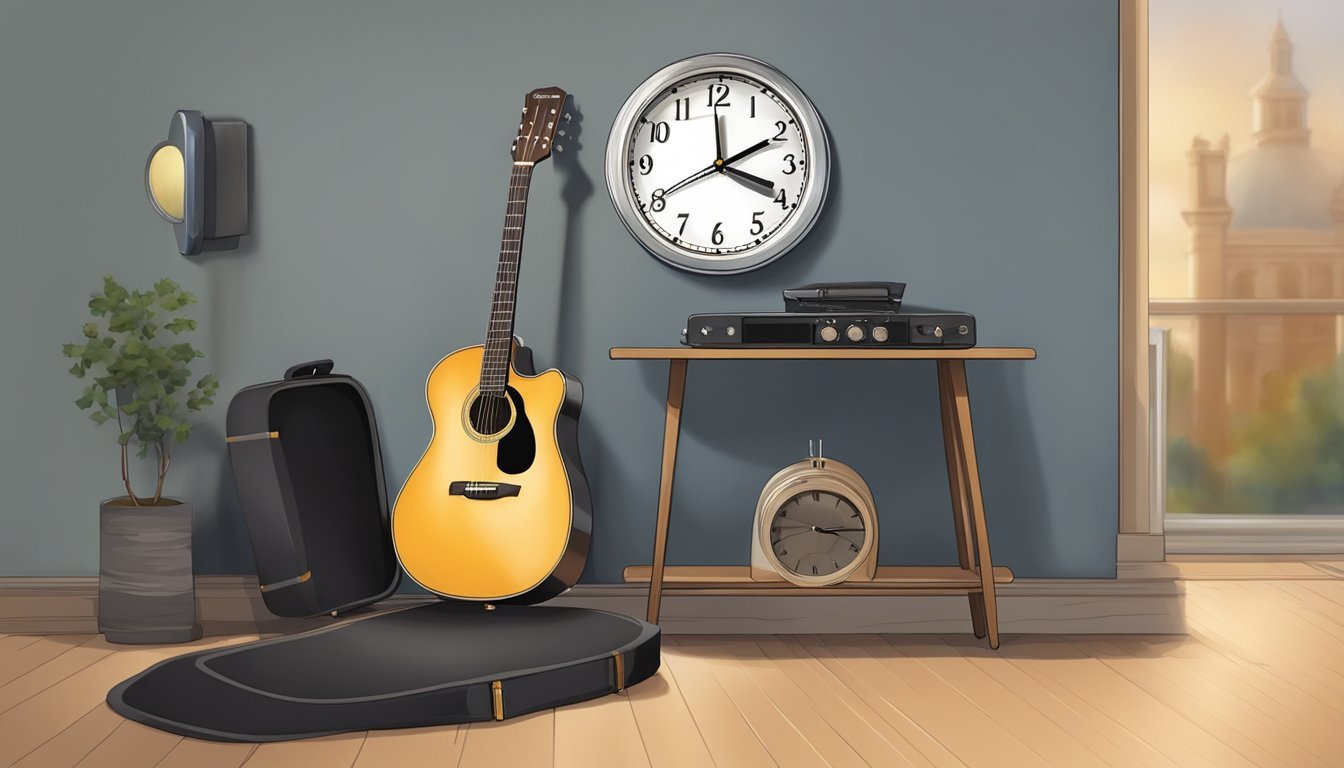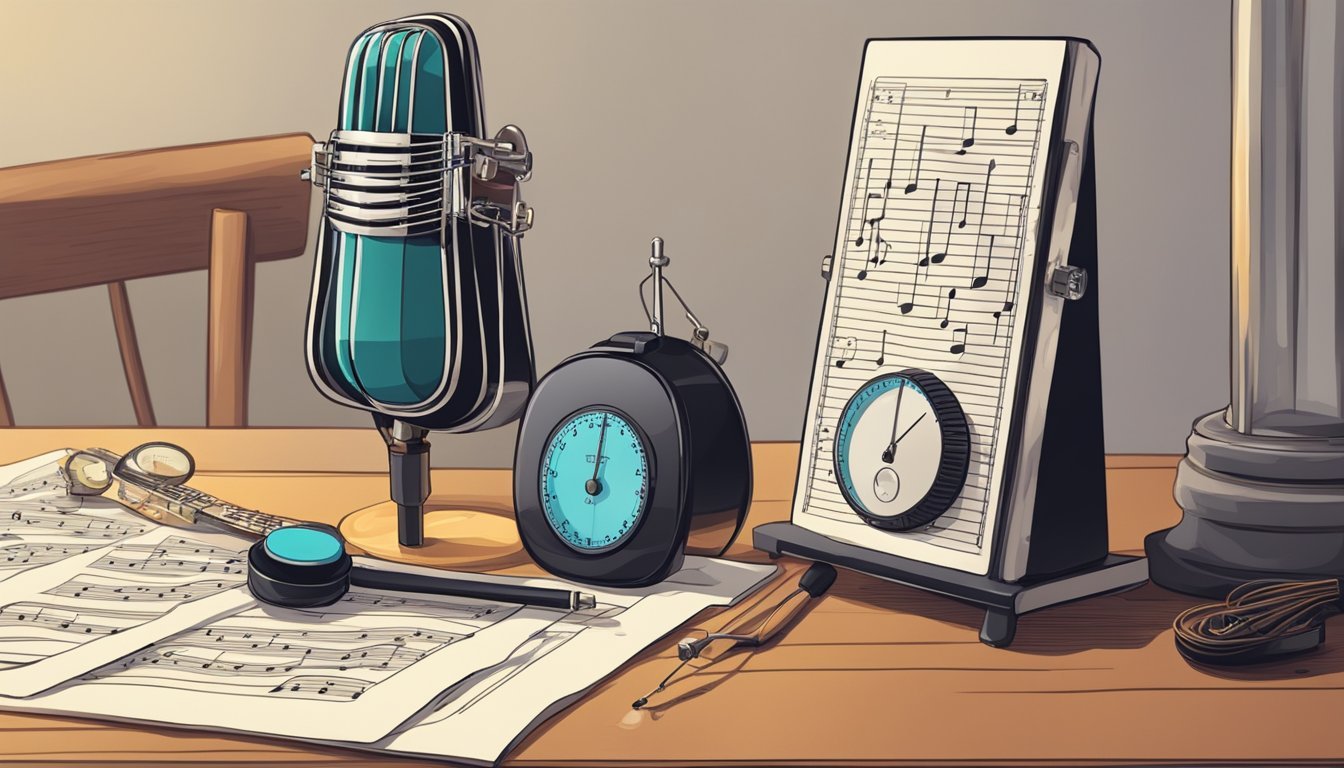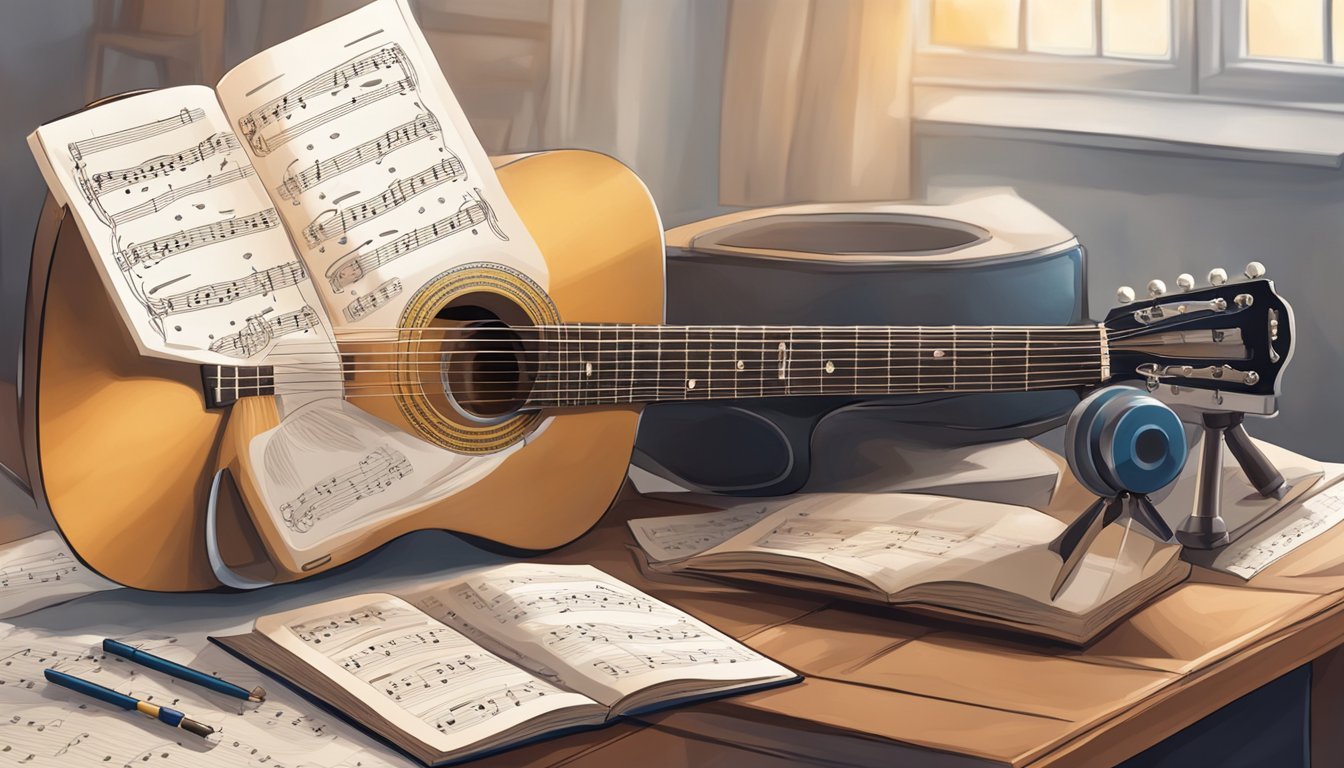Many people wonder how long it takes to learn to play the guitar.
On average, you can reach a beginner level in about 2 to 6 months with regular practice.
While this might seem quick, the real timeline can vary based on your goals, dedication, and practice routine.

As you dive into this topic, you’ll find that understanding the basics and practicing efficiently can significantly speed up your progress.
With consistent effort, you can start playing simple chords and songs fairly soon.
The journey doesn’t stop there; as you keep learning, you’ll discover more complex techniques and styles that will enhance your skills over time.
Whether you dream of strumming your favorite songs or playing like a pro, knowing what to expect can help you stay motivated.
With the right mindset and practice habits, you’ll quickly realize that learning the guitar is a rewarding experience.
Key Takeaways
- You can learn to play guitar at a beginner level in about 2 to 6 months.
- Efficient practice is key to advancing your guitar skills.
- Consistently applying what you learn helps you progress faster.
Understanding the Basics
Learning guitar involves mastering chords and strumming patterns.
These skills are crucial for playing songs and developing your style.
Let’s explore the two main parts of this foundation.
Mastering Chords and Progressions
Start with open chords like C, G, and D. These are easiest for beginners and form the backbone of many songs.
Once you’re comfortable with open chords, progress to barre chords.
Barre chords allow you to play in different positions on the neck, giving you more versatility.
You can also create chord progressions, which are sequences of chords that sound good together.
For instance, the progression C-G-Am-F is popular in various songs.
Practicing these progressions will help you switch between chords smoothly and develop muscle memory.
Make a list of songs you love that use basic chords.
This will motivate you to practice and see the real-world application of what you’re learning.
Learning Strumming Patterns and Rhythms
Strumming is just as important as the chords.
Start with simple patterns like downstrokes and alternate them with upstrokes.
Using a metronome can help you keep time while practicing your basic rhythm.
Try strumming along to your favorite songs.
Notice how different strumming patterns can change the feel of a song.
For example, a simple down-up-down-up pattern creates a steady flow.
To improve, practice various strumming patterns.
Write them down, try them out, and notice how they fit with different chord progressions.
Mixing rhythms can add depth to your playing and make your music more engaging.
Practicing Efficiently

To make the most of your guitar practice, focusing on consistency and building muscle memory is key.
By developing a solid routine and honing your skills, you’ll see progress in no time.
Developing Consistent Practice Habits
Regular practice is more effective than long sessions scattered throughout the week.
Aim for consistent practice hours.
Even 30 minutes daily can lead to significant improvement.
Establish a schedule that fits into your life.
You might find it helpful to set specific days and times for your practice.
This helps you stick to your routine.
Avoid skipping practice days as this can halt your progress.
Try this practice schedule:
- Monday, Wednesday, Friday: Technique exercises.
- Tuesday, Thursday: Learning new songs.
- Saturday: Review and jam.
- Sunday: Rest or light practice.
Focus on deliberate practice—targeting weak spots and gradually increasing challenge levels.
Building Muscle Memory and Transitioning between Chords
Muscle memory is crucial for smooth chord transitions.
When you practice, your fingers need to learn where to go without thinking.
Start with basic chords and practice switching between them.
Use this technique:
- Form the first chord.
- Visualize where your fingers need to move for the next chord.
- Practice slowly, focusing on accuracy.
Gradually increase your speed once you’re comfortable.
Spend a few minutes each session just on transitions.
The more you repeat these movements, the stronger your muscle memory becomes.
Utilize focused practice sessions to target specific transitions.
Set a timer for 10 minutes to avoid fatigue.
Don’t rush; getting it right is more important than speed.
Advancing Your Skills

As you progress in your guitar journey, focusing on specific techniques and understanding music fundamentals will help you improve.
Incorporating essential elements like scales and music theory can boost your proficiency, while tackling intermediate and advanced techniques will enhance your playing style.
Incorporating Scales and Music Theory
Learning scales is crucial for every guitarist.
They help you understand how notes work together.
Start with the major and minor scales.
Practicing these regularly allows you to create melodies and fast riffs.
Music theory is just as important.
Knowing chord structures and progressions helps you write your own songs.
For instance, the C-G-Am-F progression is popular in many hits.
Understanding how these chords interact will give you tools to improvise and jam with others.
Tackling Intermediate and Advanced Techniques
Once you have the basics down, it’s time to ramp up your skills.
Intermediate techniques like bending, hammer-ons, and pull-offs can add emotion to your solos.
For example, bending a note lets you express feelings that straight-playing might miss.
As you reach advanced levels, you’ll explore sweep picking and tapping.
These techniques are great for lead guitar and can make you stand out.
Additionally, improvisation becomes a natural part of your playing.
Use the scales you’ve practiced to create unique melodies on the spot.
This makes your playing exciting and personal.
Applying Your Skills
After learning the basics of playing guitar, it’s time to apply those skills in exciting ways.
You’ll want to focus on playing complete songs and committing to ongoing improvement.
Both will keep you motivated and moving forward.
Playing Complete Guitar Songs
Playing songs is a fun way to showcase your guitar skills.
Start with beginner guitar songs that use simple chords.
Songs like “Knockin’ on Heaven’s Door” or “Horse with No Name” are perfect.
As you grow more comfortable, tackle more challenging pieces.
You can explore fingerpicking styles or alternate picking for a change in sound.
Practice time is key; commit to regular sessions each week.
Aim for 30 minutes a day to build up your techniques and fluency.
Don’t hesitate to learn face-melting solos too! Use tools like tabs or video tutorials to break down complex parts.
With dedication, you can progress to playing your favorite rock riffs or even the major scale.
Committing to Lifelong Learning and Improvement
Guitar playing is a journey, not just a destination.
Commit to lifelong learning to keep your skills fresh.
This means taking guitar lessons, whether online or in-person.
You can also explore different genres or techniques to expand your musicality.
Dive into jazz, blues, or classical to find your unique style.
Experiment with improvisation to make your playing more dynamic and engaging.
Setting specific goals can help track your improvement.
Aim for learning a new song each month or mastering a challenging technique.
Remember that practice doesn’t always make perfect, but it leads to progress.
Enjoy the learning process, and don’t rush; it’s all about the music!
Frequently Asked Questions
If you’re starting your guitar journey, you might have some common questions about the time it takes to learn.
Here’s a look at some specific concerns you may have.
Many beginners wonder how long to learn guitar before they can confidently play their favorite songs or perform for friends.
It’s important to remember that progress varies for everyone, depending on practice frequency and personal dedication.
With consistent effort and the right resources, you could start to see significant improvement in just a few months.
What’s a realistic time frame for a beginner to start playing songs on guitar?
Most beginners can start playing simple songs within about 2 to 6 months.
With regular practice, you’ll pick up basic chords and notes fairly quickly.
Aim for at least 30 minutes of practice each day to make steady progress.
Can you become proficient in guitar if you’re teaching yourself?
Yes, you can become proficient by teaching yourself.
Many successful guitarists are self-taught.
With the right resources, practice, and persistence, you can learn to play well on your own.
How quickly can someone learn to read and play guitar tabs?
Learning to read guitar tabs can take a few days to a couple of weeks.
Tabs are a simple way to start knowing where to place your fingers.
Regular practice can help you read and play tabs quickly and easily.
Is it faster to learn chords on the acoustic or electric guitar?
Learning chords can be similar on both acoustic and electric guitars.
However, some find electric guitars easier because the strings are lighter.
Comfort with the instrument often matters more than the type of guitar.
What does it take to start playing guitar solos and riffs with speed?
To play solos and riffs well, you need to focus on finger strength and speed.
Practicing scales and doing speed exercises can help.
Consistency in your practice is key to mastering these techniques.
How long do most people take to feel comfortable playing the guitar?
Most learners feel comfortable playing after about 6 months to a year of consistent practice.
Your dedication and the time you put in will determine how quickly you progress.
Regular practice will help you build confidence and skill quickly.

